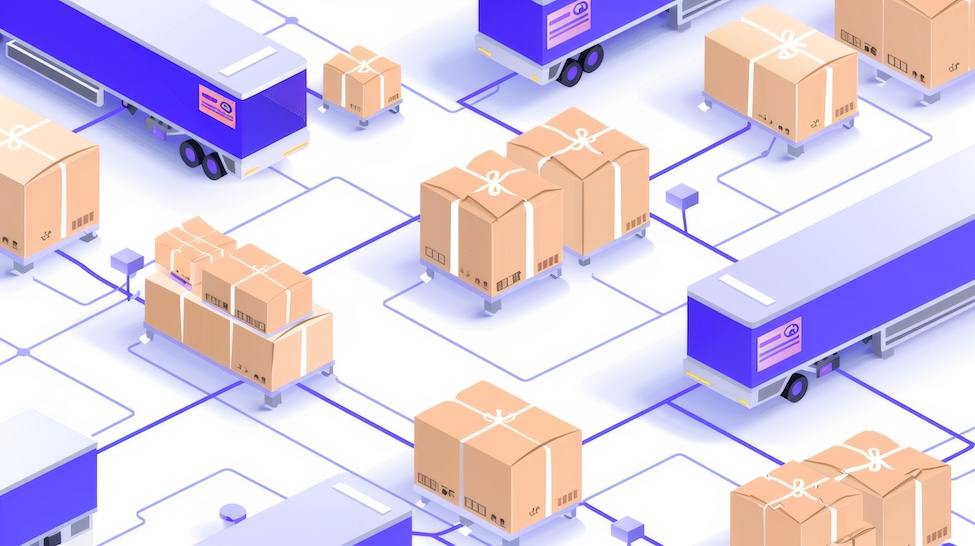What Is Cross Docking?

Understanding the Meaning of Cross-Docking
One of the costliest offenders when running a successful business is the supply chain. Keeping costs low, but the speed and productivity up is key for growth for organizations.
So, what is cross docking? Cross docking is a logistics solution for helping you to achieve these objectives. It’s important to find out from a logistics service you can trust what exactly this entails.

What Is Cross Docking in Warehousing?
Simply, cross docking’s definition is there is little to no storage time for goods when the warehouse receives them. Instead, they are ready to be shipped to their destinations upon arrival. This results in a more efficient supply chain.
A cross docking example is when goods are unloaded from incoming trucks and wheeled across the shipping dock and loaded into outbound trucks. The benefit to this system is products are spending little to no time at the warehouse. Therefore, costs to do with inventory handling and storage are greatly reduced.
Not only this, but it is time-efficient because goods will reach their final destination faster. This gives the advantage to you over your competitors who have longer wait times for their goods.
The term cross docking can be broken down into two basic types:
Pre-Distribution vs. Post-Distribution Cross Docking
Pre-distribution refers to goods that have a destination decided for them before they have even left the supplier.
In opposition, post-distribution adds a little more time spent in the distribution facility. Sorting is postponed until demand for goods decides the destination.
You will benefit from the post-distribution process because it gives you time to make more informed decisions based on KPIs, sales trends and forecasts, and up-to-date inventory.
Why Not Choose Direct Shipping?
While cross docking is popular and used widely by manufacturers, there is the alternative option of direct shipping. It sounds like a simpler option to cross docking meaning it should be the simpler of the two, right?
Even though the goods are only there for a short time, cross docking involves a distribution center. This center needs the infrastructure and staff to ensure the supply chain runs smoothly. This results in more time between leaving the supplier and reaching you than direct shipping would, for example.
It makes sense that you might think you can skip the distribution step and save even more time and money. However, the process of direct shipping comes with its own headaches.
When distribution is not a core part of your business, it creates a significant administrative workload. This can prove to be more trouble than it’s worth, which is what makes cross docking the superior option.
Difference Between Cross Docking and Traditional Warehousing
Traditional warehousing systems require a supplier to have stocks of products available to ship to customers. In opposition, cross docking is when stock is unloaded from an incoming delivery to outbound transport, with little to no storage in-between.
There are many benefits to a fourth-party logistics (4PL) team. If they are efficient like we are, they will offer cross docking when beneficial. However, they will also provide traditional warehousing when required.
Benefits of Cross Docking Services
There are many benefits to choosing cross docking over traditional warehousing and here are some of them:
Product Turnover Is High
To create an easier delivery process, cross docking offers the opportunity for deconsolidation arrangements. Essentially this means, to provide an easier delivery process, large product loads are broken down into smaller ones.
As goods reach the customer faster, cross docking can help you increase your turnover. Ultimately, you will reduce how long goods are sitting on a shelf not selling. This increases profitability.
Efficiency, Reduced Shipping Times, and Cost
Traditional warehousing requires more staff. As cross docking reduces the number of staff required, you save money without cutting into the efficiency of the service.
When you use storage space for your goods, you are renting the space it takes up, which is an added expense. While one of these examples might not be too costly on its own, every delay or unnecessary expense adds up.
Simple Inventory Management
As there is a reduction in the amount of time spent managing inventory, cross docking means there is more time to be spent elsewhere. Not only will this save money, but it will also increase productivity.
Less Risk of Damage to Goods
By skipping the step of storage, you are essentially skipping an opportunity for damage. The time between the goods leaving the supplier and reaching their destination is cut.
Not only this but goods are unloaded from the incoming truck, through the cross dock warehouse, onto an outgoing truck seamlessly, so it passes through the least amount of hands as possible. Where there are humans involved, there is room for human error. So, by choosing cross docking you are effectively also cutting out opportunities for error.
Customer Satisfaction
Time is being saved and logistically there is a seamless relationship between ordering goods and receiving them. Lead times are shortened and products are delivered on time, which has a positive impact on customer experience.
Why Choose AmerTrans?
We understand that a supply chain is more than just a cost, it’s an asset to your business. We possess the expertise required to help you make the best decisions for your business. Together we will help you achieve success.
If you think cross docking is something that would benefit your business contact us today for a no-obligation quote.
Related Articles
General
Inbound Logistics Explained: Processes, Benefits & Best Practices

Efficiency is the cornerstone of business success in today’s competitive environment. Inbound logistics, a critical component of supply chain management, plays a pivotal role in determining a company’s operational effectiveness and overall performance. Inbound logistics encompasses the processes involved in receiving, storing, and distributing raw materials, components, or finished goods from suppliers to production facilities […]
Read MoreGeneral
Freight Shipping vs. Standard Shipping: Understanding the Difference

Freight shipping stands as a cornerstone of modern logistics, propelling the global economy forward through the efficient movement of goods. This essential component of commerce encompasses the transportation of large quantities of products, distinguishing itself from standard shipping methods in scale, complexity, and significance. Understanding freight shipping is essential for business owners aiming to optimize […]
Read More
